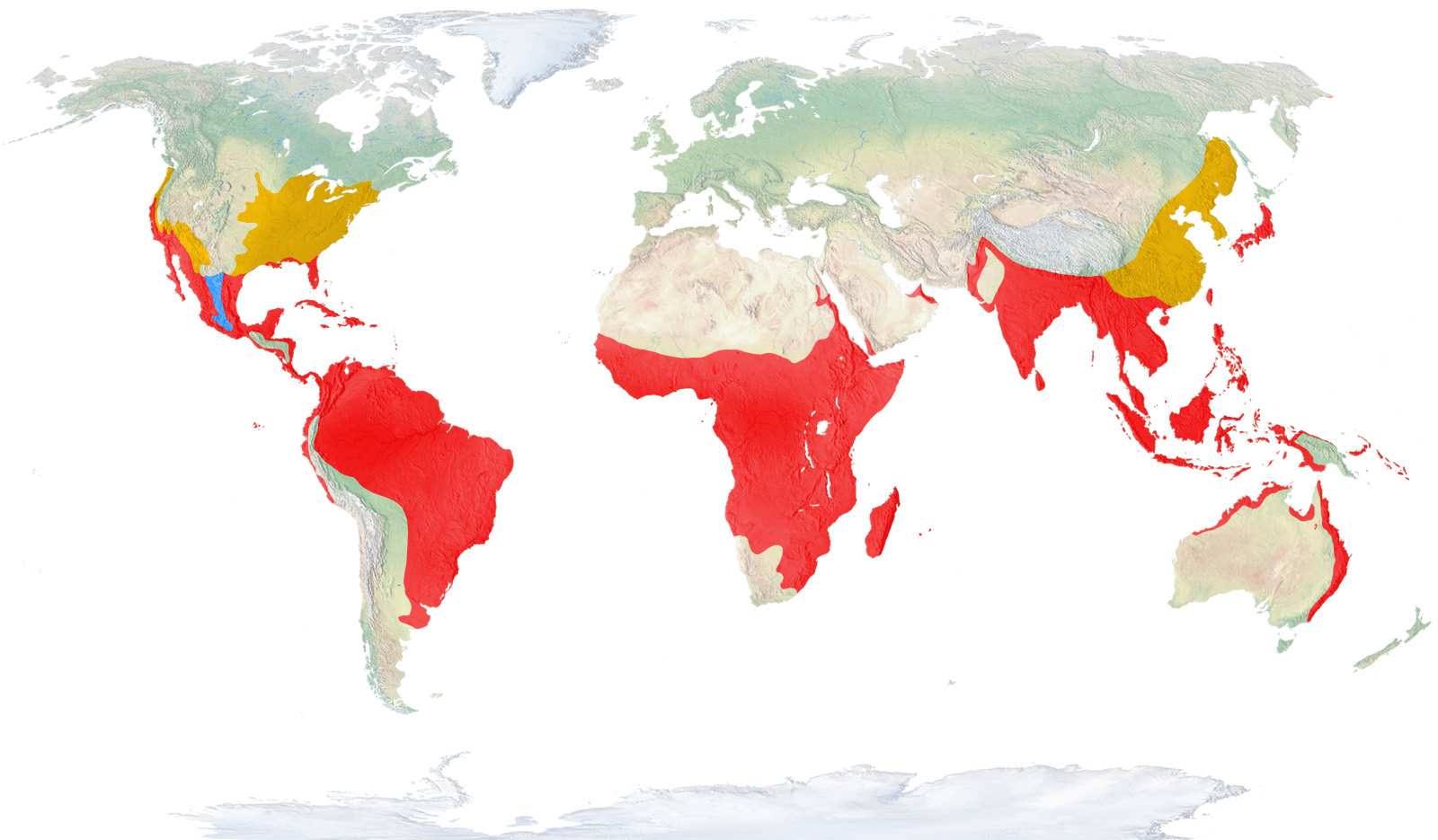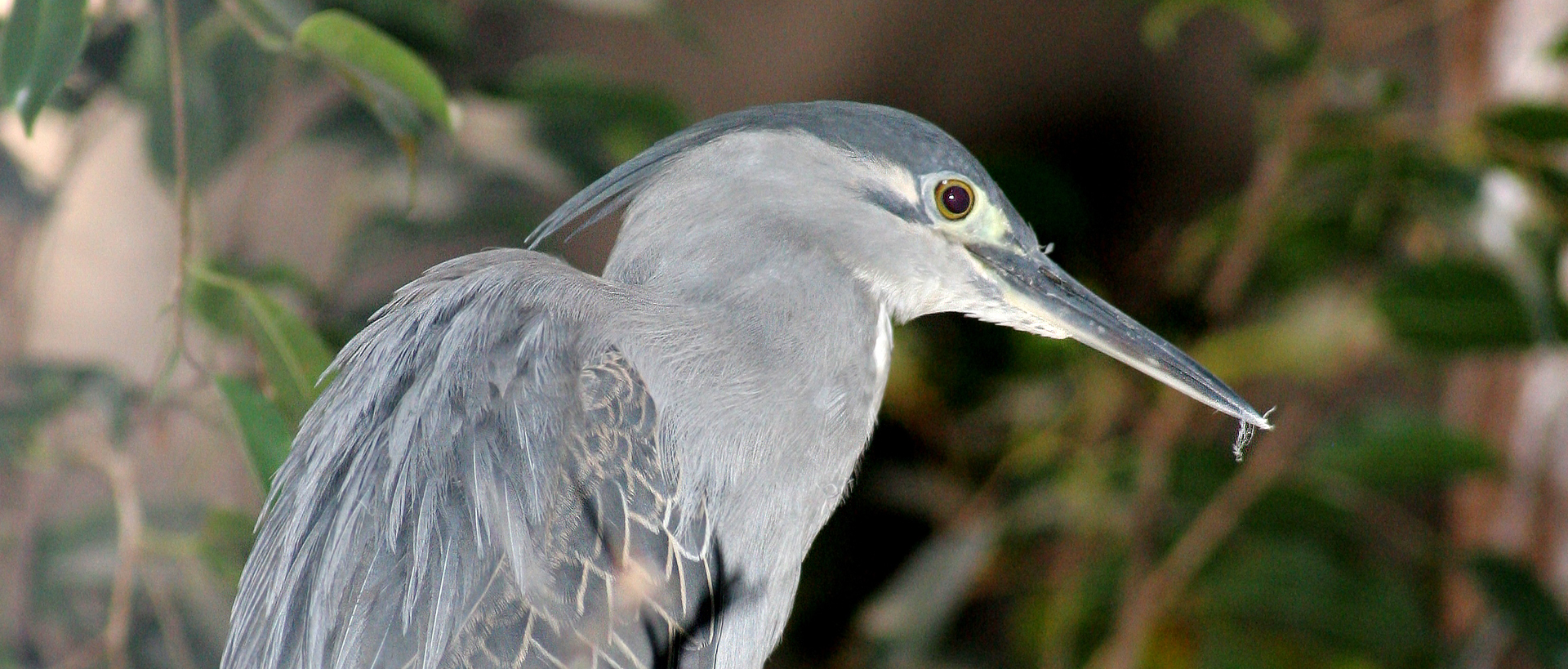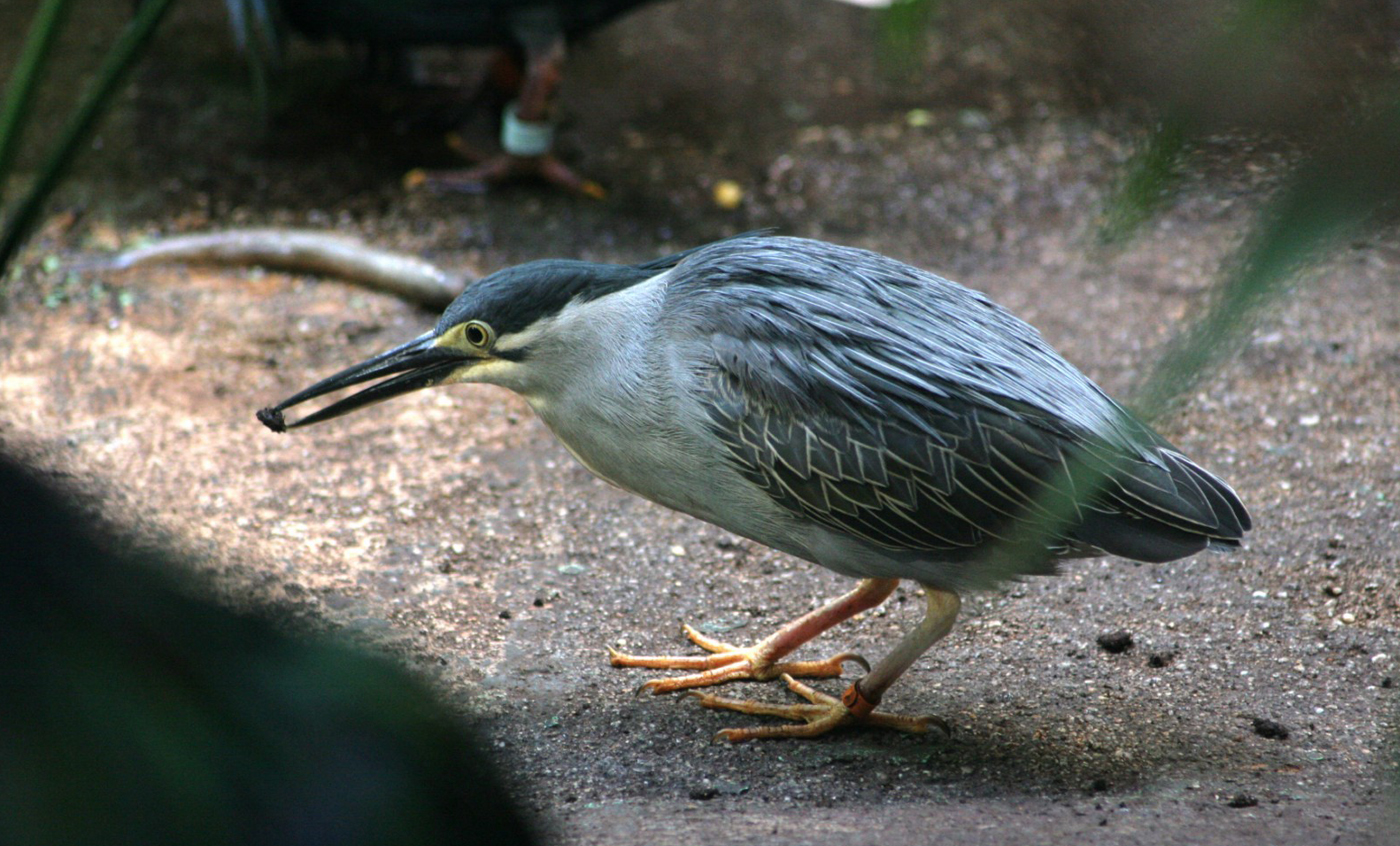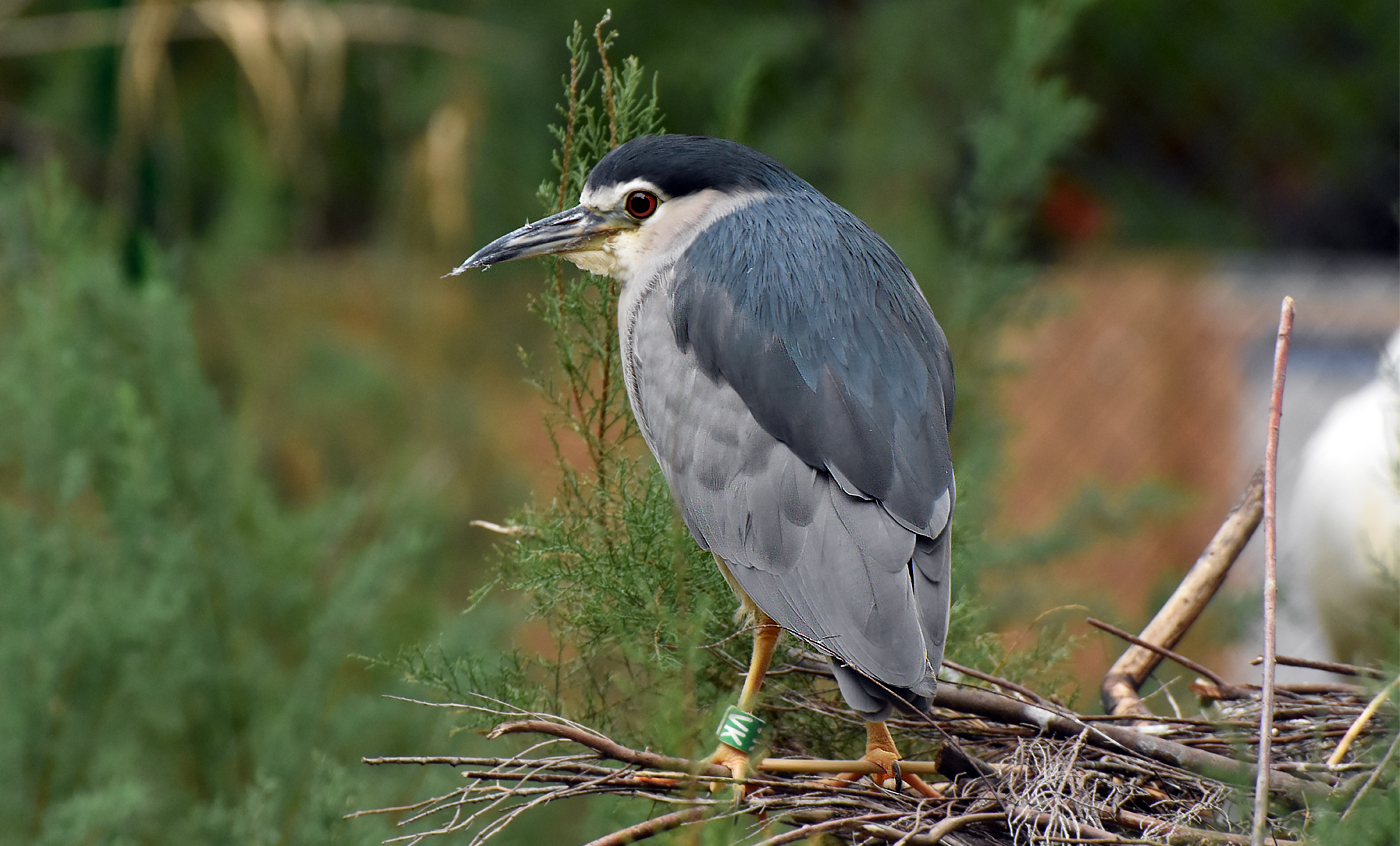Green-backed heron
Widely distributed throughout the world, this bird lives next to water, both fresh and salt or seawater, where it feeds on all kinds of small aquatic animals. Unlike many of its relatives who are gregarious and colonial in their behaviour, this species has solitary habits and lives alone or with its mate all year round.
Natural habit
It lives on shores of water, both sweet, sea and salty, generally in mangroves, rivers or streams with dense vegetation on the shores.

- Distribution / Resident
- Breeding
- Wintering
- Subspecies
Risk level
- Extint
- Extint in the wild
- Critically endangered
- In Danger
- Vulnerable
- Near threatened
- Minor concern
- Insufficient data
- Not evaluated
Taxonomy
Physical characteristics
Biology
Reproduction
Biology
Small Ardeidae with a wide area of distribution throughout the world. It is characterised by its long prominent beak, its black-hued crown that flows into extensive black and grey plumage on the dorsal area, yellow legs, very dark or black wings and tail, and chestnut-coloured belly and neck. It has a stripe running lengthwise from the throat to the bottom of the chest, which is a highly defined cinnamon colour that surrounds a white stripe that runs to the belly. The physical variability among the subspecies of this bird—33—is incredible, ranging from black covering the body to totally cinnamon, to specimens in certain subspecies that are totally grey or with yellowish feathers.
It lives on shores of water, both sweet, sea and salty, generally in mangroves, rivers or streams with dense vegetation on the shores.
Although varying greatly depending on the area of distribution, it generally feeds on all types of small water animals.
The breeding season, like all species with such large areas of distribution extending through regions with widely diverse temperatures and climates, varies greatly. However, it always builds nests from branches and twigs with abundant plant matter, mainly made by the female, which uses the materials that the male gathers and, sometimes, robs from other nests, located in bushes and trees at some height, close to or over wetlands or watercourses. The female lays from one to nine green or light-blue eggs, generally between three and five, which are incubated by both sexes for periods from 19 to 29 days.
Unlike many of its relatives, more gregarious and colony dwelling, this species is quite solitary, living in isolation or with its couple throughout the year.
The majority of specimens in this species are residents and not migratory, although in southernmost and northernmost points of its distribution there are variations in distribution, always due to changes in the amount of food or the status and condition of wetlands.
It is not endangered in any of its area of distribution, in which it is considered common and locally abundant to greater or lesser degrees. However, it has started to have problems adapting to human activity in some areas, and is even hunted as a source of food in many of them.





